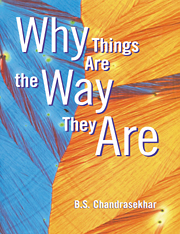Book contents
- Frontmatter
- Contents
- PREFACE
- I INTRODUCTION
- II CRYSTALS
- III PARTICLES AND WAVES
- IV THE ATOM
- V STATISTICAL PHYSICS
- VI THE QUANTUM MECHANICAL CRYSTAL
- VII COPPER WIRES AND GLASS RODS
- VIII SILVER SPOONS AND PLASTIC SPOONS
- IX GLASS PANES AND ALUMINIUM FOILS
- X ELECTRIC BULBS AND INSULATED CABLES
- XI MAGNETS
- XII SUPERCONDUCTORS
- XIII CONCLUSION
- GLOSSARY
- INDEX
- Frontmatter
- Contents
- PREFACE
- I INTRODUCTION
- II CRYSTALS
- III PARTICLES AND WAVES
- IV THE ATOM
- V STATISTICAL PHYSICS
- VI THE QUANTUM MECHANICAL CRYSTAL
- VII COPPER WIRES AND GLASS RODS
- VIII SILVER SPOONS AND PLASTIC SPOONS
- IX GLASS PANES AND ALUMINIUM FOILS
- X ELECTRIC BULBS AND INSULATED CABLES
- XI MAGNETS
- XII SUPERCONDUCTORS
- XIII CONCLUSION
- GLOSSARY
- INDEX
Summary
Introduction
I give in this chapter the quantum-mechanical description of an atom. I look in some detail at the hydrogen atom, which is the simplest atom we have, with just one proton and one electron. From the picture that emerges, we shall be able to see how to describe all other atoms. Before continuing, I need to explain what I mean when I say that the proton and electron have equal and opposite electric charges. It is because of these charges that the atom is stable, and does not spontaneously break up into the two separate particles.
Electric charge and potential energy
If I take a ball in my hand and then let go, it drops to the floor. This is because of the gravitational interaction between the ball and the earth. The ball had gravitational potential energy when I held it, and when I release it, this energy is progressively converted to kinetic energy as it falls. Gravitation makes two bodies move towards each other, and not away from each other: the gravitational force is always attractive.
As a result of many experiments done over the years, we find that there is another kind of force in nature, somewhat analogous to, but in one aspect different from, gravitation. I take two idealized examples, and use them to show the features of this force. First I consider two electrons that I imagine to be pinned down a distance r apart.
- Type
- Chapter
- Information
- Why Things Are the Way They Are , pp. 63 - 83Publisher: Cambridge University PressPrint publication year: 1997



